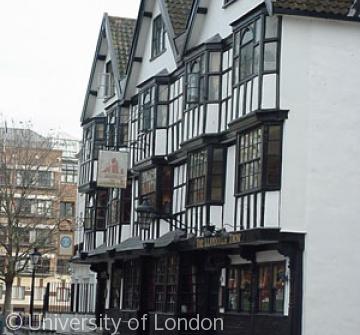King Street

Built in the seventeenth century, this is one of the few remaining streets in Bristol with a number of buildings which owe their existence to the wealth generated by the slave trade. In 1775 the street was home to both Henry Webb, captain of the slaver the Nevis Planter, and Robert Walls, surgeon on the Guinea slaver.
The street lies just south of the old town wall and was laid out in 1650 in order to develop the Town Marsh, the area then lying between the south or Marsh Wall and the Avon. The north side was developed first and the south side in 1663, when the street was named after Charles II.
Among the historic buildings in the street are:
- The Llandoger Trow, originally merchants' houses, now a historic public house (1664)
- The Old Duke, a public house (1780s)
- King William and Naval Volunteer Public Houses (1670s)
- St Nicholas's Almshouses (1652)
- Theatre Royal (1766)
- Coopers' Hall (1743), now part of the theatre
- Number 6, an example of an early Georgian frontage
- Numbers 33-34 (1653) the only surviving buildings of the original development, including parts of the old town wall
- Number 35 Warehouse example of the Bristol Byzantine style
- Free Library (1738-40) by James Paty, now a Chinese restaurant
- Merchant Venturers Almshouses (1696-9)
Queen Square lies just to the south of King Street, and a small 21st century open space connects the west end of King Street to the north-west corner of Queen Square.
Content generated during research for the paperback book 'Bristol: Ethnic Monorities and the City 1000-2001' (ISBN 13 : 978-1-86077-477-5 ) for the England's Past for Everyone series






